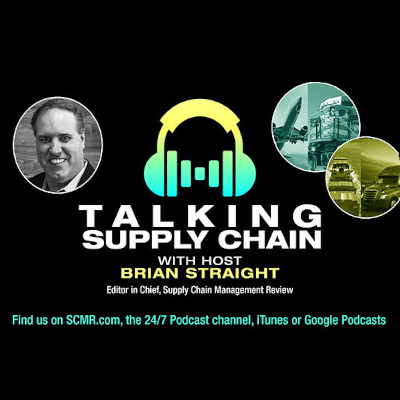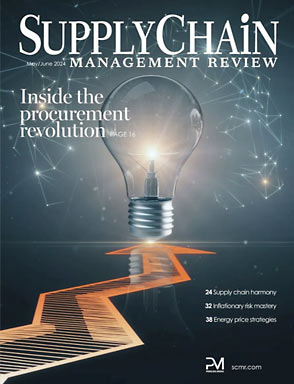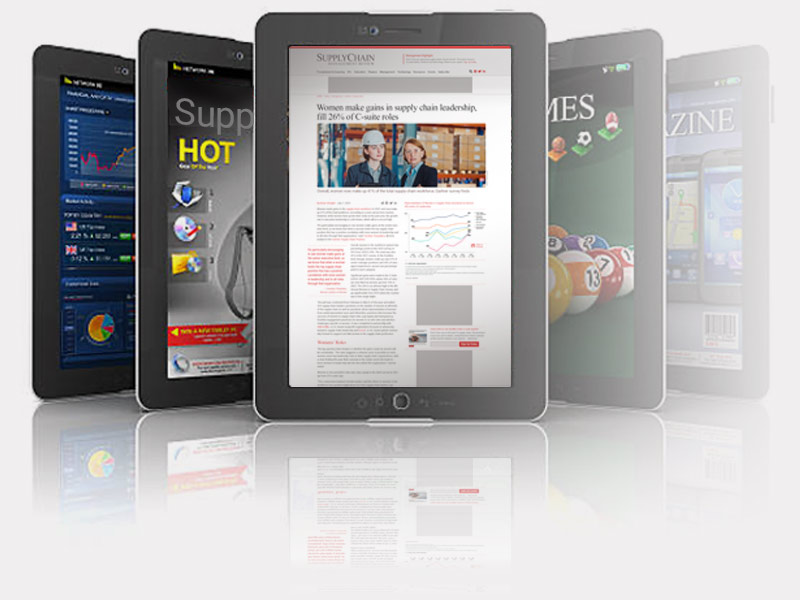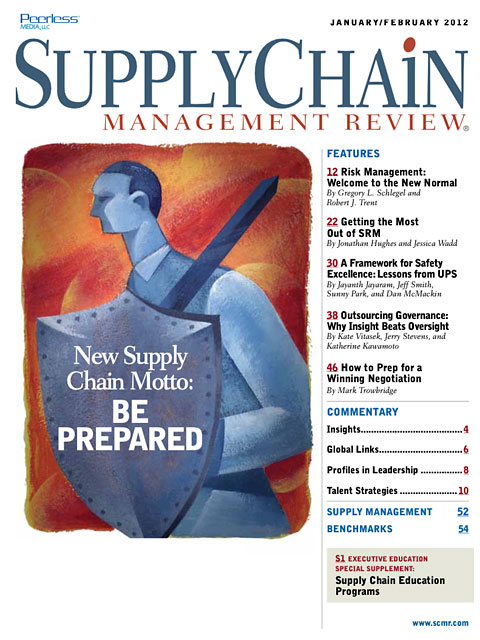Sorry, but your login has failed. Please recheck your login information and resubmit. If your subscription has expired, renew here.
January-February 2012
The potential risk of supply chain disruption has never been greater. In fact, it’s become the new normal, say authors and educators Robert Trent and Greg Schlegel. The problem for many companies is that they are ill prepared to handle a disruption should one occur. This article argues for a new set of risk management techniques in a world where heightened supply chain risk has become a fact of business life. Browse this issue archive.Need Help? Contact customer service 847-559-7581 More options
Although supply chain managers today have access to a wide range of e-sourcing and auction technology tools, they still use conventional negotiations as the way to establish or adjust the business relationships. Most senior procurement professionals would agree that this is the preferred way to handle alliances and strategic supplier relationships, which collectively account for a large proportion of supply chain spending.
In my many years of leading negotiations on behalf of Fortune 100 companies, and in training corporate and conference audiences on best practices in negotiations, I’ve become impressed with the levels of preparation of the typical supplier negotiating team compared to their procurement opponents. It’s apparent that those suppliers’ teams are making the time to cover every possibility they can think of. The team on the other side of the table? Not so much.
 |
This complete article is available to subscribers
only. Click on Log In Now at the top of this article for full access. Or, Start your PLUS+ subscription for instant access. |
Not ready to subscribe, but need this article?
Buy the complete article now. Only $20.00. Instant PDF Download.
Access the complete issue of Supply Chain Management Review magazine featuring
this article including every word, chart and table exactly as it appeared in the magazine.
SC
MR
Sorry, but your login has failed. Please recheck your login information and resubmit. If your subscription has expired, renew here.
January-February 2012
The potential risk of supply chain disruption has never been greater. In fact, it’s become the new normal, say authors and educators Robert Trent and Greg Schlegel. The problem for many companies is that they are… Browse this issue archive. Download a PDF file of the January-February 2012 issue. |
Download Article PDF |
Although supply chain managers today have access to a wide range of e-sourcing and auction technology tools, they still use conventional negotiations as the way to establish or adjust the business relationships. Most senior procurement professionals would agree that this is the preferred way to handle alliances and strategic supplier relationships, which collectively account for a large proportion of supply chain spending.
In my many years of leading negotiations on behalf of Fortune 100 companies, and in training corporate and conference audiences on best practices in negotiations, I’ve become impressed with the levels of preparation of the typical supplier negotiating team compared to their procurement opponents. It’s apparent that those suppliers’ teams are making the time to cover every possibility they can think of. The team on the other side of the table? Not so much.
 |
SUBSCRIBERS: Click here to download PDF of the full article. |
SC
MR

Latest Supply Chain News
- ‘Purple People’ and the evolution of supply chain talent
- Looking for the next frontier of margin enhancement? Think structurally
- ISM May Semiannual Report calls for growth in 2024, at a reduced rate
- Augmented reality’s role in upskilling the workforce
- Supply chain salaries top $100K for first time
- More News
Latest Podcast

 Explore
Explore
Latest Supply Chain News
- ‘Purple People’ and the evolution of supply chain talent
- Looking for the next frontier of margin enhancement? Think structurally
- ISM May Semiannual Report calls for growth in 2024, at a reduced rate
- Augmented reality’s role in upskilling the workforce
- Supply chain salaries top $100K for first time
- Supply chain’s rise in prominence brings regulatory compliance into focus
- More latest news
Latest Resources

Subscribe

Supply Chain Management Review delivers the best industry content.

Editors’ Picks





